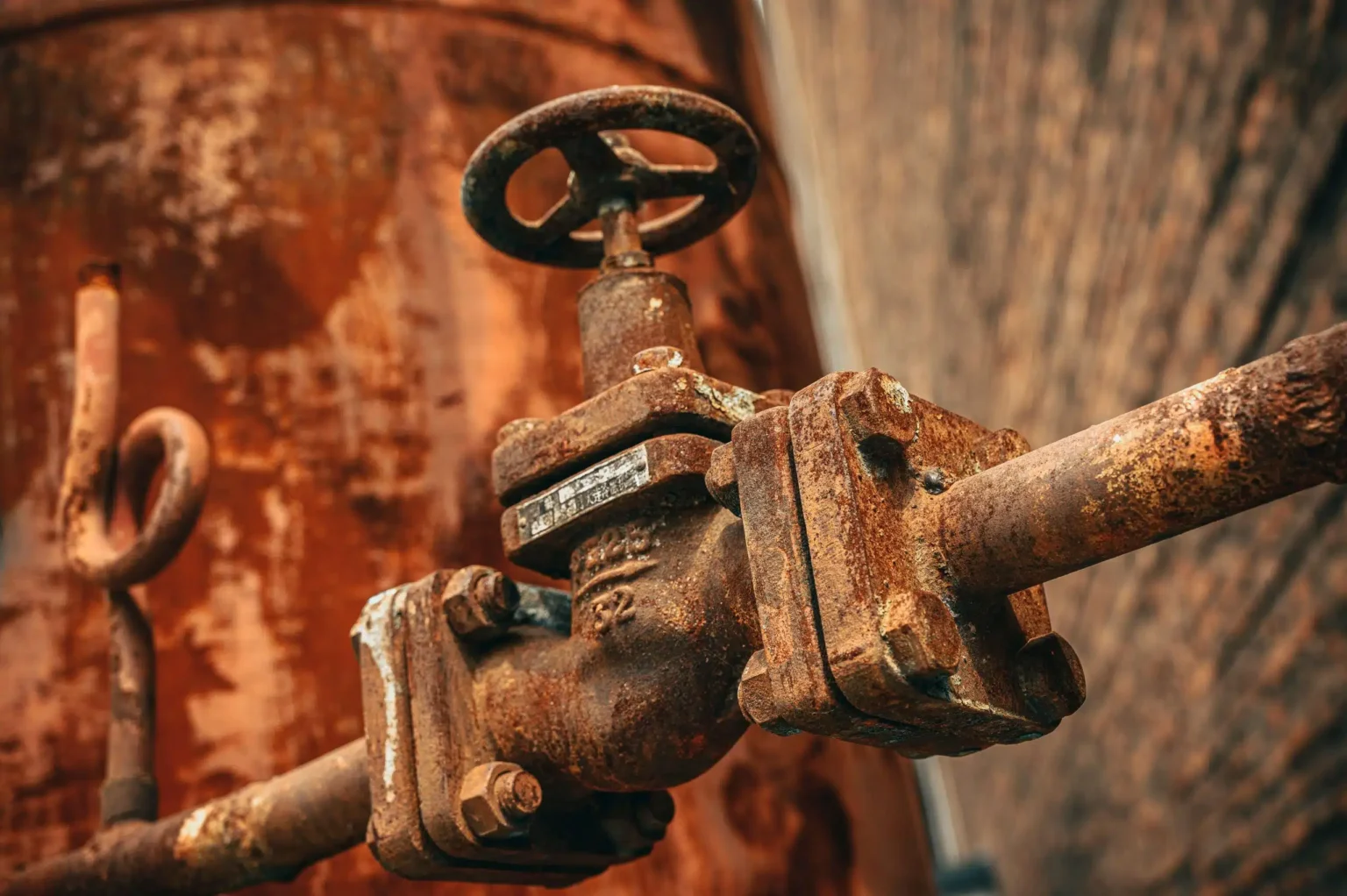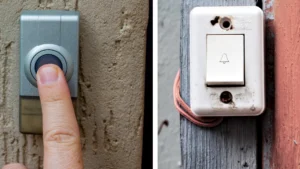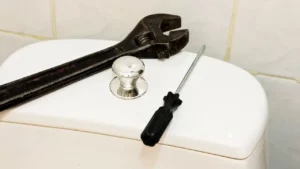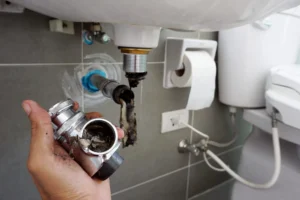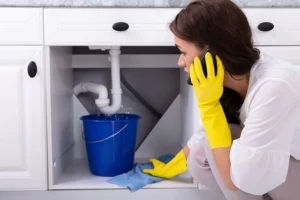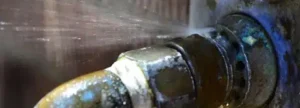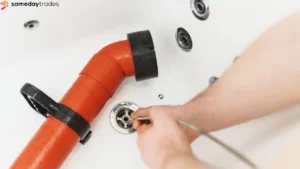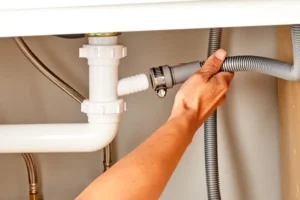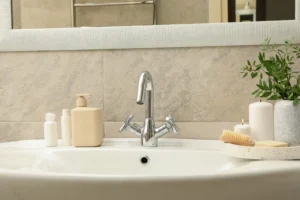Many people in Australia deal with rusty water pipes. A fact is, you can avoid corrosion with the right knowledge. This article will show you how to prevent corrosion in your plumbing system.
Keep reading for top tips.
Understanding Corrosion in Plumbing Systems
Corrosion is a natural process that damages plumbing systems. It typically occurs when metal pipes react with moisture and other substances, leading to rust and decay.
What is corrosion?
Corrosion is the gradual deterioration of materials due to chemical reactions. This process often affects metals, leading to rust and other damages. Water quality plays a significant role in corrosion, especially in plumbing systems.
Microbiologically influenced corrosion occurs when bacteria break down metal surfaces. Preventing rust in plumbing systems involves using resistant materials and maintaining water treatment standards.
Understanding the basics of corrosion helps protect your plumbing infrastructure. Regular inspections can reveal early signs of damage and prevent extensive issues later on.
Common forms of corrosion
Understanding corrosion helps in identifying its common forms. This knowledge is crucial for preventing rust and maintaining plumbing systems.
– Galvanic corrosion occurs when two different metals contact each other in the presence of an electrolyte, causing one metal to corrode faster than the other. This situation can often arise with dissimilar pipe fittings in plumbing systems.
– Pitting corrosion creates small holes or pits on a metal surface, making it particularly dangerous because it can lead to leaks. Regular inspections help spot these issues before they worsen.
– Crevice corrosion takes place in confined spaces where moisture gets trapped, such as under clamps or gaskets. Keeping pipes clean and clear prevents this type of damage.
– Erosion-corrosion occurs as a result of fluid movement wearing away material at specific points on a pipe’s surface, often seen in high-velocity water flow situations. Managing flow rates can minimise erosion-related damage.
– Rust forms on iron-based materials when moisture interacts with oxygen, creating iron oxide. Selecting corrosion-resistant alloys can prevent rust formation significantly in Adelaide plumbing systems.
– Corrosive environments increase the risk of various types of corrosion occurring more rapidly than usual when exposed to factors like humidity and temperature changes. Monitoring moisture levels within plumbing installations helps mitigate risks associated with these environments.
– Filiform corrosion appears as fine, thread-like filaments under protective coatings or paint layers due to moisture infiltration behind them, leading to deterioration beneath the surface layer over time without visible signs initially noticeable during routine inspections.
Environments prone to corrosion
Corrosion can occur in various environments. Identifying these areas helps in preventing damage to plumbing systems.
– Wet conditions significantly encourage corrosion. Moisture accelerates the oxidation process in metals, leading to rust formation in Australian water pipes.
– Areas with high humidity increase the risk of pipe degradation. Pipes exposed to damp air suffer more from corrosion and require enhanced protection.
– Chemical exposure often leads to accelerated corrosion rates. Plumbing systems that come into contact with harsh chemicals need special materials for effective protection against corrosion prevention in Australia.
– Microbiologically influenced environments invite unique challenges for rust prevention. Bacteria can create conditions that promote corrosion, making regular maintenance essential to keep plumbing systems safe and functional.
– High-temperature locations are particularly at risk for corrosion issues. Hot water systems can accelerate wear and tear, leading to quicker degradation of pipes if not properly managed.
– Urban settings introduce additional factors like pollution or salt from coastal areas, increasing the risk of pipe corrosion significantly.
– Industrial environments present higher chances of severe corrosive conditions due to chemicals used during operations.
– Flushing systems according to BS EN 806-4 enhances cleaning and reduces stagnation, thus minimising corrosion threats in plumbing infrastructure.
– Poorly ventilated spaces tend to trap moisture around pipes, creating an ideal breeding ground for rust.
– Over time, old materials degrade faster when subject to corrosive environments; replacing them with modern options like PVC or PEX aids long-term protection against rust in plumbing systems across Australia.
Taking action now can make a significant difference while protecting water pipes from corrosion impact!
Methods for Preventing Corrosion
Choosing the right materials can significantly reduce corrosion risks. Coatings provide essential protection and keep pipes safe from harmful elements.
Material selection
Selecting the right materials is crucial for preventing corrosion in plumbing systems. Corrosion-resistant options include PVC, copper, and PEX. These materials resist rust and degradation better than others.
They provide long-term solutions against pipe corrosion. Replacing old pipes with these alternatives can significantly enhance system longevity.
Using protective coatings also helps reduce the risk of corrosion. Galvanisation acts as a barrier against moisture and chemicals that cause harm to metal pipes. Sealants offer additional protection by sealing joints and crevices where water may collect.
Proper material selection plays a key role in managing corrosion in hot water systems too. Taking these steps safeguards Australian homes from costly plumbing repairs down the line.
Protective coatings
Protective coatings offer a vital line of defence against corrosion in plumbing systems. These coatings shield metal pipes and fittings from harsh environmental factors. Techniques like galvanisation help create a barrier against moisture.
Sealants also play an important role in preventing water corrosion.
In Australia, applying these protective layers is crucial for maintaining water supply infrastructure. Keeping structures clean enhances the effectiveness of protective coatings. Regular inspections can reveal areas needing touch-ups or reapplication to maintain their integrity over time.
Using these methods helps protect water pipes from corrosion and ensures longevity in plumbing systems across Australian homes.
Chemical balancing
Chemical balancing plays a key role in preventing corrosion. Maintaining the correct levels of chemicals in your plumbing system helps keep the water safe and clean. Use chlorine or other chemical disinfectants to tackle microbiologically influenced corrosion.
Regularly check these levels to avoid problems down the line.
Choosing suitable materials also matters for long-term corrosion prevention. Materials like PVC, copper, and PEX resist rust better than traditional options. By focusing on chemical balancing, you can protect against pipe corrosion effectively while maintaining healthy plumbing systems across Australian homes.
Design modification
Design modification plays a critical role in preventing corrosion in plumbing systems. Properly sizing pipework can help avoid issues linked to corrosion. Flushing systems according to BS EN 806-4 ensures water flows freely and reduces stagnation, which often leads to rust and other forms of degradation.
Replace old pipes or fittings with corrosion-resistant materials like PVC, copper, or PEX. These materials show less susceptibility to rust than traditional options. Implementing design modifications not only enhances the longevity of plumbing systems but also improves overall efficiency in protecting against pipe corrosion.
Tips for Preventing Corrosion in Plumbing Systems
Take care of your plumbing with regular maintenance and inspections. Keeping an eye on moisture levels can help spot potential corrosion before it becomes a big problem.
Regular maintenance and inspections
Regular maintenance and inspections play a crucial role in preventing corrosion in plumbing systems. These activities help identify issues early, saving money and avoiding significant damage.
– Schedule routine checks for water pipes to spot signs of wear and tear. Look for rust spots or leaks during each inspection.
– Clean pipes regularly to remove any build-up that can trap moisture. Keeping the surfaces clear reduces the risk of corrosion.
– Test water chemistry periodically to maintain proper balance. Ideal conditions will prevent microbiologically influenced corrosion.
– Flush systems according to BS EN 806-4 standards to eliminate stagnant water. This action helps reduce the likelihood of corrosion developing in your plumbing.
– Inspect fittings and joints often for any signs of degradation or cracking. Replacing worn-out parts promptly prevents further issues.
– Check for proper sizing of pipework to ensure efficient flow rates. Poorly sized pipes can lead to increased pressure and subsequent corrosion risks.
– Document all maintenance actions thoroughly, noting dates and findings for future reference. This practice assists in tracking changes over time.
– Evaluate the effectiveness of protective coatings annually to confirm they remain intact and functioning properly.
Making regular maintenance a priority will enhance your efforts in avoiding corrosion in water pipes across Australian plumbing systems.
Keeping pipes clean and clear
Keeping pipes clean and clear helps to prevent corrosion effectively. Regular maintenance plays a vital role in ensuring plumbing systems remain durable.
– Inspect the pipes for cracks or damage often. Small issues can escalate quickly if ignored. Addressing these problems keeps water flowing smoothly.
– Monitor water quality frequently. High levels of minerals or chemicals in the water may contribute to rust formation. Test the water regularly to maintain ideal conditions.
– Flush the plumbing system consistently. This practice removes stagnant water and any potential corrosive elements. Following guidelines like BS EN 806-4 ensures thorough cleaning.
– Use chlorine or chemical disinfectants effectively. These prevent microbiologically influenced corrosion (MIC). Keeping bacteria at bay protects your pipes from degradation.
– Ensure proper ventilation in areas with pipes installed. Good airflow reduces condensation on pipes, minimising rust development over time.
– Apply sealants or galvanisation where needed. These protective layers guard against harsh environmental factors that cause corrosion in plumbing systems.
Monitoring moisture levels
Monitoring moisture levels plays a key role in preventing corrosion in plumbing systems. High humidity can lead to rust and degradation of pipes. Regularly check for leaks or damp spots around fixtures and joints.
Addressing these issues quickly helps reduce moisture accumulation. Proper ventilation also aids in maintaining lower moisture levels.
Control the environment where your pipes reside. Use dehumidifiers if necessary, especially in basements or crawl spaces prone to dampness. Keeping moisture at bay protects water pipes from corrosion and extends their lifespan.
This is essential for maintaining the integrity of Australian plumbing infrastructure.
Next, explore methods for selecting materials that resist corrosion effectively.
Minimising contact with corrosive materials
Minimising contact with corrosive materials is vital for preventing rust in Australian plumbing systems. Keep all metal pipes away from harsh chemicals and cleaners. Use proper storage for cleaning supplies to avoid leaks that can damage plumbing.
Flushing systems according to BS EN 806-4 helps reduce chemical build-up. Regular inspections allow homeowners to spot potential issues early and take action.
Consider replacing old pipes or fittings with corrosion-resistant materials like PEX or copper. These options have a lower risk of degradation compared to traditional materials. Apply protective coatings on exposed metal surfaces as an added layer of defence against corrosion risks.
Taking these steps will significantly reduce the chances of corrosion affecting your plumbing system in Australia.
Choosing the Right Materials for Long-Term Corrosion Prevention
Choosing materials that resist corrosion will save you money and time on repairs. Use corrosion-resistant alloys, high-performance coatings, or timber alternatives for better durability.
Selecting the right options can protect your plumbing system effectively. Discover more about how to enhance your plumbing choices!
Corrosion-resistant alloys
Corrosion-resistant alloys offer great protection against rust and degradation. These materials include options like PVC, copper, and PEX. Choosing these alloys helps prevent corrosion in plumbing systems throughout Australia.
They resist the common forms of corrosion that affect metal pipes. Replacing old fittings with these modern materials significantly reduces future maintenance needs.
By selecting the right materials, homeowners can protect water pipes from corrosion effectively. Keeping structures clean also plays a vital role in preventing damage to plumbing infrastructure.
Understanding how to manage your water supply ensures long-term reliability and function in your plumbing system. The next step is learning about high-performance coatings that enhance this protection further.
High performance coatings
High performance coatings provide strong protection for pipes against corrosion. These coatings serve as a barrier, preventing moisture and chemicals from reaching the metal surface.
Using sealants can significantly reduce water corrosion in plumbing systems. Applying high-quality coatings helps extend the life of your plumbing infrastructure.
Selecting these coatings can combat microbiologically influenced corrosion. Regular inspections and maintenance ensure that protective layers remain intact over time. Overall, opting for high performance coatings is a smart move for preventing degradation of plumbing systems in Australia.
Timber alternatives
High-performance coatings work well, but timber alternatives also offer benefits. PVC, copper, and PEX are excellent choices for preventing corrosion in plumbing systems. These materials resist rust and corrosion better than traditional options.
They help protect water pipes from damage over time.
Using timber can cut down on the risk of microbiologically influenced corrosion as well. Choose durable wood products treated with protective agents to enhance their lifespan. This approach minimises exposure to corrosive elements found in water systems and improves longevity without sacrificing performance.
Conclusion
Preventing corrosion in plumbing systems is essential. Regular checks and clean-ups make a big difference. Choose the right materials, like PVC or copper, for long-lasting protection.
Use protective coatings and keep moisture levels low to fight rust. Simple steps can save money and headaches down the line. Stay proactive and safeguard your pipes today!

